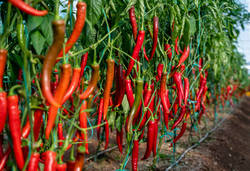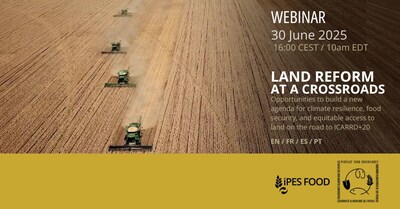Pakistan Today | 21 September 2022
Cows and chillies – the CPEC plan to revamp agriculture and livestock
China will assist Pakistan in producing embryos of high-milk yielding cows and in setting up contract-farms growing high-yield chilis.
By Abdullah Niazi & Ghulam Abbas
On Tuesday, a high-level meeting of the China-Pakistan Joint Working Group (JWG) on agriculture put their heads together to discuss two important subjects — Cows and chilis. A little known but significant part of the China Pakistan Economic Corridor (CPEC) agreement is boosting agricultural trade between the two countries.
It has been a longstanding plan to bolster food security through CPEC, but the plans to launch agricultural trade between China and Pakistan have long been in very nascent stages. In these initial stages, the first couple of projects to be announced were focused on milk and chilis. In June 2021, an initial pilot-project to test the feasibility of growing chilis in Pakistan with the intention of exporting them to China was successfully completed. The former head of the CPEC authority Lt General (R) Asim Saleem Bajwa had announced the experiment on 100 acres of land had been a great success, with initial estimates showing farmers could earn Rs 100,000 per acre.
More than a year later, work on both the livestock and agriculture has picked up pace steadily. At Tuesday’s meeting of the JWG, several investment initiatives were reviewed as part of the first batch of CPEC projects to boost agricultural trade and expand economic activities between the two countries.
What does CPEC have to do with agriculture?
The concept is very simple. In Pakistan, there are a few critical problems that hamper agriculture, livestock, and all manner of produce. The specifics are usually things like poor seed quality, a lack of modern farming techniques, low-yield, and a lack of skilled farm labour. The solution to all of these problems is singular — research.
Pakistan desperately needs more agricultural and livestock research to not just increase yields but also produce higher quality products that can be exported. That is where China comes in. Under the CPEC banner, the recent meeting of the JWG was organised between the Ministry of National Food Security and Research (MNFS&R) and the Ministry of Agriculture and Rural Affairs (MARA) of China. The goal was to not just discuss the progress of the fledgling projects that are in the process of taking off, but also to review areas for further strengthening bilateral cooperation in agriculture and livestock between the two countries.
Where do the projects stand?
Currently there are two end-goals. The first is to improve the genetic variations of cows being used in Pakistan for dairy farming. To achieve this, Pakistan requires better embryos to be able to farm elite animals with high-yields and long lives. To this end, the Royal Group of China has established a laboratory in Lahore to develop buffalo embryos of elite animals. The company also plans to set up a buffalo dairy farm of 8,000 heads. The project is aimed at significantly improving buffalo breeds and milk yield both in Pakistan and China.
On the other front, the Sichuan Litong Ltd. and China Machinery and Engineering Corporation have started chilli contract-farming in Punjab and Sindh on 400 hectares. The company is providing local farmers technology and training to grow high-quality chilis. It has planned to expand this operation on 10,000 hectares and to also establish a chilli processing plant.
The chilli project is actually quite fascinating. Pakistan as a country has ideal conditions for growing chillies. As per the Ministry of National Food Security and Research (Economic Wing), chilli is grown on 47,349 hectares in Pakistan with a crop yield of about 2.68 tons per hectare (1.072 tons per acre) and an annual production of around 126,943 tons in FY 2018-19. Over the past couple of years, however, chillies have first seen a significant increase in yield and then a significant dip.
While chillies are a native product that thrive in the region, the reality is that demand (particularly international demand) varies because of the unreliability of the crops in Pakistan. To this end, the Chinese companies taking on the chilli project are hoping to use better farming techniques, the latest research, and better seeds to grow more chillies in a smaller area and then export them to China. To do this, perhaps what is a bigger deal is that they will process and dry these chillies before exporting them — making it one of the few crops that get post harvest treatment in Pakistan as well. If successful, this may open other avenues for export for Pakistan as well.
The potential really is massive. Earlier this year, near the end of May, six model farms under Pakistan-China Red Chilli Contract Farming Project achieved a bumper harvest in southern Punjab and northern Sindh, with an estimated yield of 700 tons of dried chillies. According to Dai Bao, leader of the agricultural project of China Machinery Engineering Corporation (CMEC) in Pakistan, crops in the six model farms with a total area of nearly 300 acres began bearing fruits in May. As part of the process, more than 200 local technicians were trained this planting season and nearly 1,000 jobs were created
A similar story stands on the livestock end of the equation as well. Other than trying to ensure high-quality embryos the China Animal Husbandry Industry Co., Ltd. is also planning a livestock vaccine production plant in Gwadar which would produce vaccines to prevent animal diseases such as foot and mouth disease.
Meanwhile another Chinese firm, Shandong Rainbow Agriculture Polytron Technologies Inc, is planning to set up laboratories for potato seed culture and oilseed development. Zhengbang Ltd. has signed an MOU with Fauji Fertiliser Corporation to jointly establish plants to produce pesticides and cattle and poultry feed in the Allama Iqbal Special Economic Zone in Faisalabad under the said framework. Both sides appreciated and expressed satisfaction on the progress in business-to-business initiatives.
As per documents in the government-to-government cooperation framework, China will provide technical assistance to establish the Centre for Sustainable Management of Plant Pests and Diseases in Karachi. The Chinese Academy of Agricultural Sciences will strengthen technology cooperation with Pakistan counterparts to enhance the capacity of prevention and control of pests and diseases. China will also help Pakistan in capacity-building for cotton-seed technology. Both countries will soon sign an MOU on Strengthening Cooperation on Animal Disease Control. Scientists from both countries will jointly work to enhance prevention and control of pests and diseases. Both sides agreed to promote transfer of technology and strengthen capacity of the concerned institutions in Pakistan.
NI Hongxing, who headed the Chinese delegation, said that China looks forward to further strengthening partnership with Pakistan in agriculture. He hoped that by the next Joint Working Group meeting, in the second half of 2023, a meaningful progress will be achieved to expand agricultural trade and deepen scientific ties between two countries.
Syed Khalid Gardezi, Additional Secretary MNFS&R said that the Joint Working Group is an effective platform for cooperation and trade between Pakistan and China, through which both countries can collaborate in capacity-building, infrastructure development, and transfer of technology.
Will it work?
In reality, only time will tell. The fact of the matter is that if taken to fruition, CPEC would have an impact on agriculture as it is. There is direct association between various types of infrastructure and agricultural output growth. In addition to this, rural electrification increases irrigated area, improves irrigation facilities and as a result the output of crops cultivated through underground irrigation systems is always higher than those under canal or tank irrigation.
Those are just the collateral benefits of a largely developed CPEC network. However, Pakistan stands in a position where China is a massive market they could export foods to. Our only real advantage is the soil that we have, and with assistance on the research and development front much can be done with the natural gifts of the land. Whether we will take the opportunity or not is yet to be seen.













